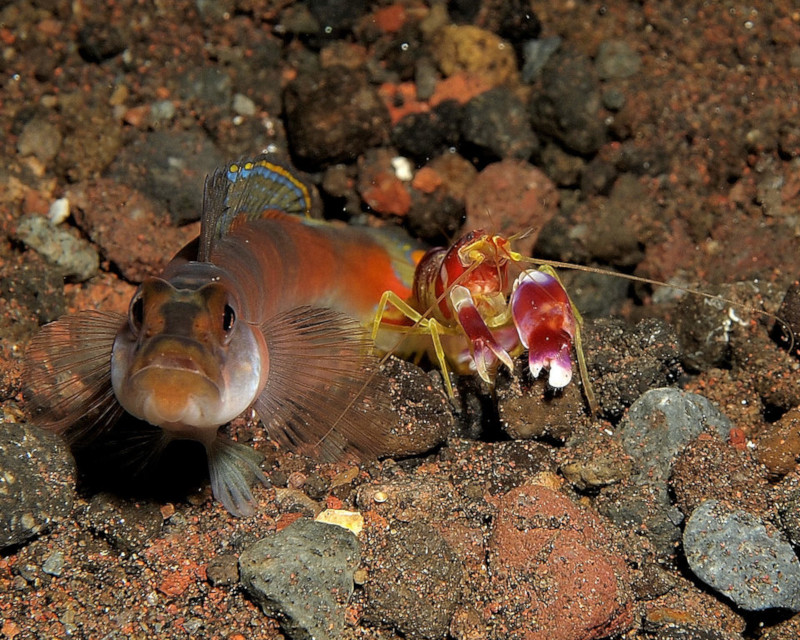Pistol Shrimp Facts
- To the surprise of some, the term Pistol Shrimp applies to many species. In fact, it serves for any of the amazing members of the Alpheidae family of shrimp. This family also currently contains an astounding 1,119 recognized species.
- That’s a truly astounding number. All members of this family, however, remain characterized by a single trait. That’s possessing asymmetrical claws. The larger claw in all of these species evolved as capable of generating a loud snapping sound.
- Its common name further derives from an incredibly unique ability it has. That’s due to the fact that, despite its diminutive stature, the animal remains one of the loudest creatures on earth. Its snapping can reach a volume of as much as 218 decibels.
- Not surprisingly, the dazzling creature has few natural predators, for understandable reasons. Like many other species, however, it now faces potential threats to its continued existence. The leading danger it faces consists of climate change.
- For the moment, though, relatively few types of Pistol Shrimp appear on the Red List of Threatened Species. This fortunate situation, as listed by the IUCN, remains precarious, however. That holds true for most of the species on earth, though.
Related Articles
Pistol Shrimp Physical Description
The awesome Pistol Shrimp impresses based on factors other than sheer physical size. In fact, it typically attains an average length of only about 2 in (5 cm). The greatly oversized snapping claw, however, often grows as long as half the body length of the shrimp.
The design of the larger claw further remains entirely unique among known types of shrimp. That’s because it possesses a pistol-like component which comprised of two distinct parts. A special joint allows the hammer part to retract to a right angle position.
When released, this astounding appendage creates the characteristic snapping noise. The Pistol Shrimp also has yet another incredible evolutionary advantage. That’s due to the unexpected fact that this larger claw may appear on either of its arms.
While it usually develops on one arm only, if lost, it will regrow on the other arm. The arm that originally held the larger claw, meanwhile, will grow a new, smaller claw. The precise reason for this particular approach to replacement continues to elude researchers.
- Kingdom: Animalia
- Phylum: Arthropoda
- Class: Malacostraca
- Order: Decapoda
- Family: Alpheidae
Pistol Shrimp Distribution, Habitat, and Ecology
Given the number of different species of Pistol Shrimp, its range of overall distribution isn’t surprising. In point of fact, the animal appears virtually worldwide in its zone of habitation. Most of the various species, but not all, though, inhabit either tropical or temperate waters.
Those varieties that live in the warmer climates, meanwhile, display similar and precise preferences for their habitat. Most of these commonly make their homes in regions of coral reef. One remarkable species, however, actually lives only in freshwater caves.
Some species have also developed a symbiotic relationship with the goby fish. The two will even share the same protective burrow. The shrimp maintains the burrow. Having better eyesight, the goby fish watches for danger when the pair goes outside the burrow.
The method of sound generation is truly astonishing. The powerful claw opens so quickly and shuts with such velocity that it creates a cavitation bubble. This bubble expands outward rapidly. The outward pressure actually generates the powerful shock wave.
The Pistol Shrimp uses this to hunt for prey. The shock wave is brief, lasting only one millisecond. However, it is powerful enough to kill small fish, or even shatter glass. Groups of these shrimp in a feeding frenzy will actually interfere with the sonar of submarines.
Species Sharing Its Range
Check out our other articles on 6 Mysterious Natural Phenomena, Flamboyant Cuttlefish, Pewits Nest, Guatemalan Fir, Marine Iguana, Jewel Wasp, Limnonectes larvaepartus, Eurasian Red Squirrel

